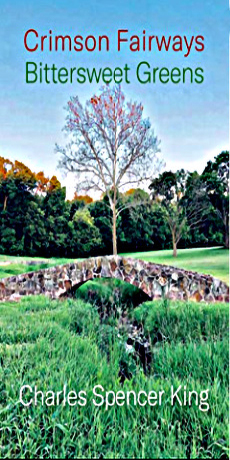By Scott Holleran
The endurance of a single work of art—The Wonderful Wizard of Oz by L. Frank Baum—astonishes, particularly in today’s culture. The profit and discourse sparked by Oz’s themes are incalculably vast, deep and profound. Can one quantify its impact? To examine this great and powerful work of literature, the starting point, with an exposition of capitalism at the peak of America’s Industrial Revolution and credit to the author, Lyman Frank Baum, is Chicago. New York-born Baum, an ardent and failed artist who grappled with being a family man, entrepreneur and printer of philosophy and sought to dramatize an ideal social system within a city, imagined and created Oz in Chicago.

The 1939 film version’s famous Emerald City, originally envisioned and created by Baum in Chicago.
Impact of the Wonderful World of Baum
The book at the center of Baum’s Chicago-inspired world, The Wonderful Wizard of Oz, remains well-known and popular. But its place among literary scholars underscores the book’s intellectual heft. Oz was included to celebrate the 1995 centenary of the New York Public Library with a list of books based on librarian recommendations of literature that “shaped and defined the 20th century.” Oz was named with The Bonfire of the Vanities, Native Son, Atlas Shrugged, Gone With the Wind, Dracula and Brave New World. Baum’s 1900 novel was also named by students enrolled in Radcliffe’s advanced course for college graduates interested in pursuing a publishing career, listing the 20th century’s top 100 novels by request of the Modern Library. The list included Charlotte’s Web, The Lord of the Rings, 1984, Winnie the Pooh, The Fountainhead and The World According to Garp.
Some may know of Oz through a Broadway musical. Invented backstories of Baum’s characters the Wicked Witch of the West and Glinda the Good are depicted in Wicked, also adapted as a film series, based on a 1995 novel and adapted for a 2003 stage musical. That novel’s witch, unnamed in Baum’s Wizard of Oz, is named Elphaba, invoking the author’s initials from his pen name, L. Frank Baum, according to an article by Evan Schwartz in Smithsonian magazine.
The original story’s plot and character points demonstrate its depth and influence in Baum’s own words, however. “The story of the wonderful Wizard of Oz was written solely to pleasure children of today,” Baum wrote in the introduction. “It aspires to being modernized fairy tale.” In his novel’s first chapter, “The Cyclone,” he wrote that “Dorothy lived in the midst of the great Kansas prairies, with Uncle Henry, who was a farmer, and Aunt Em, who was the farmer’s wife.”
Dorothy’s hurled into a fantasy to learn about becoming an adult facing reality. For example, in the chapter “The Rescue,” the Tin Woodman speaks to Dorothy of heartbreak. Evoking love for the one who is different, he tells her he was in love with a woman who was a Munchkin. “She, on her part, promised to marry me as soon as I could earn enough money to build a better house for her; so I set to work harder than ever. But the girl lived with an old woman who did not want her to marry anyone, for she was so lazy she wished the girl to remain with her and do the cooking and the housework.”
When the Wicked Witch keeps cutting off his body parts until his whole body is made of tin, the Woodsman perseveres. “It was a terrible thing to undergo,” he confides. “[B]ut during the year I stood there I had time to think that the greatest loss I had known was the loss of my heart. While I was in love I was the happiest man on earth…”
By the time she encounters a Lion, Dorothy—who has been wronged by a cruel woman who sought to kill her beloved little dog—draws a boundary and asserts herself: “Don’t you dare to bite Toto! You ought to be ashamed of yourself, a big beast like you, to bite a poor little dog!”
Whether Baum portrays the archetypical self-made man in the Tin Woodman or sketches the young, modern female, his turn to Midwestern values comes through in the novel. For instance, as the leader of Oz first turns to Dorothy, he gives her a lesson—in being productive toward practicing the art of free trade—rather than deliver a pat reply to her question about going home to the Prairie state:
“I will give you my answer. You have no right to expect me to send you back to Kansas unless you do something for me in return. In this country everyone must pay for everything he gets. If you wish me to use my magic power to send you home again you must do something for me first. Help me and I will help you.”
In Dorothy’s assignment, there’s no moral equivalence or equivocation. The wizard, whatever his bluster and flaws, instructs her to stand up to the evil woman who lords over the land. Indeed, while the wizard makes his request of the quartet before him, the Wicked Witch, for her part, turns her weapons against them: “Go to those people,” said the witch, “and tear them to pieces.” She says this to a pack of great wolves that had long legs and fierce eyes and sharp teeth.” \
The wizard may rest his reputation on the believer, but the witch demands that her servants act as slaves. Dorothy, representing the new century’s emerging archetype—the intransigent one with a mind of her own—forges her own triumphant path. By the end, Baum writes of the purposeful girl on the brink of womanhood and behaving like a warrior: “…being at last free to do as she chose, she ran out to the court-yard to tell the Lion that the Wicked Witch of the West had come to an end, and that they were no longer prisoners in a strange land.” Baum adds to evidence of Dorothy’s newly acquired empathy, wisdom and command as she asks those with whom she’s bonded: “Can you straighten out those dents in the Tin Woodman, and bend him back into shape again, and solder him together where he is broken?”
Baum’s origins, influences and chronology
How did this Chicago writer come up with such imaginative, innovative themes and ideas—trading with one’s values, loving someone who’s different, the individual standing up to the rule of tyranny—in 1900? That Baum could afford the knowledge, experience and money may trace to a gift bestowed by his father.

Author and Chicago writer Lyman Frank Baum.
“When Lyman Frank Baum was 15,” Regina Barreca writes in her introduction to Signet Classics’ 2006 paperback edition of The Wonderful Wizard of Oz, “his father bought him a printing press and, for most of the rest of his life, Baum was involved in drama, writing or journalism.” Privately educated Baum, who briefly attended a New York military academy, worked as a cub reporter for the New York World at 17, later opening his own printer’s shop in Bradford, Pennsylvania, where he established a newspaper called The New Era, and managing a chain of opera houses in New York and Pennsylvania as well as acting with a traveling stock company.
Evan Schwartz, reporting in December 2024 in Smithsonian magazine, writes that “the real-life backstory of the witches of Oz … involves a hidden hero of the 19th-century women’s rights movement and the most powerful woman in Baum’s life: his mother-in-law, Matilda Electa Joslyn Gage.”
Baum’s mother-in-law encouraged Baum to submit his stories and poems for publication, even suggesting the cyclone subplot. “As one of the three principal leaders [with Susan B. Anthony and Elizabeth Cady Stanton] of the women’s rights movement,” Schwartz wrote, “Gage was known for her radical views and confrontational approach.” When critics branded her a heretic, “she became an expert on the subject of witch hunts.” Her 1893 manifesto Woman, Church and State covered centuries when women were accused of witchcraft and put to death by fire, hanging, torture, drowning or stoning. In one gruesome scene, she described 400 women burning at once in a French public square “for a crime which never existed save in the imagination of those persecutors and which grew in their imagination from a false belief in woman’s extraordinary wickedness.” Gage died, Schwartz notes, “two years before the publication of The Wonderful Wizard of Oz, a story that produced the most enduring image of female wickedness in American history. But Baum also introduced the world to a different kind of witch. It was the beautiful and benevolent Glinda, likely inspired by Matilda herself, who showed Dorothy that she always held the power to return home.”
Gage’s father had been a freethinker. Gage’s parents were abolitionists whose home was a station on the Underground Railroad; a place where escaped slaves could hide under kitchen floorboards. Gage was home-schooled in math, Greek and physiology and she later enrolled in a school “free of religious dogma.” At 18, she married Henry Gage, a merchant and store owner, and they settled near Syracuse, where they raised four children. Their youngest daughter, Maud, would meet and marry L. Frank Baum.
Twenty year-old Maud met her dormitory roommate’s 25-year-old cousin Frank on Christmas Eve during Maud Gage’s freshman year in Ithaca, New York at Cornell University, “the first Ivy League university to become coeducational.” Baum was by then a chicken farmer writing and starring in his own stage plays. After courtship, Baum proposed marriage. The couple were wed in November 1882 “[w]ith a string quartet playing…at the [Gages’] Greek Revival home.”
The Beginning of Business, Industry and Oil with Origins of the Oilcan
Frank and Maud Baum “rented a house in Syracuse and had the first of their four sons. The new dad brought in steady money as the superintendent and sales manager for Baum’s (pronounced Bom’s) Castorine Company, a family business that created lubricants for buggies and machinery, a firm that still operates out of Rome, New York.” Schwartz writes that Baum would never forget his days “selling cans of oil, making the item a must-have for the Tin Woodman, who always needs a few drips to avoid rust.”
As Baum learned about his in-laws’ lives out West—in the Dakota Territory—he yearned for a more ambitious life. Relocating with his wife and kids in 1888 to a town in what became South Dakota, he established a novelty shop on its main street called Baum’s Bazaar. “The store failed in just 15 months,” Schwartz notes. Baum closed the shop in December 1889, when his mother-in-law Matilda visited from the East, staying with the Baums “every winter for the rest of her life.”
As Mother Gage and suffragists persuaded legislators to hold a referendum in the new state of South Dakota on a woman’s right to vote, Baum decided to invest his remaining funds into what Schwartz describes as the weakest newspaper in a town with several newspapers. “His first editorials for the Aberdeen Saturday Pioneer were high-minded. “The key to the success of our country is tolerance,” Baum wrote. “The ‘live and let live’ policy of the Americans has excited the admiration of the world.” Volunteering as secretary of Aberdeen’s Women’s Suffrage Society, Baum argued that a law giving women the vote was more likely out there, as the West was new and open-minded. Gage barnstormed the state as Baum published editorials: “We are engaged in an equal struggle,” Baum wrote. In the West, he added, “a woman delights in being useful; a young lady’s highest ambition is to become a bread-winner.”
On November 4, 1890, South Dakota’s male voters voted against the right of women to vote. Besides a drought and massive crop failure, farmers and merchants were in distress. Baum was saddled with “credit slips and unpaid expenses.” By January 1891, Schwartz writes, Baum seemed to have lost almost everything,” as his newspaper business collapsed. “At the age of 34, he had no job, no career, no prospects, only a damaged reputation.” That spring, the Baums moved to Chicago.
This is when L. Frank Baum seeded his success with lessons of failure. Now with a background in the press, Baum was hired as a writer for the Chicago Evening Post. On a parallel trajectory, his mother-in-law—feeling neglected, with some justification, from failing to get credit for her role in the women’s rights movement—escalated her own intellectual pursuits. Baum and his mother-in-law bonded in mutual pursuit; as Baum struggled to make a creative career, his wife’s mother struggled to gain the recognition she thought she’d earned and deserved. The result was Baum’s immersion in a woman’s world of justice, assertiveness and vindication.
Accompanying his mother-in-law to lectures and séances, Baum became member of the Theosophical Society. The group blended Hinduism, Buddhism and other notions, such as telepathy, with human-centric emphasis on living a peaceful life. Throughout this odyssey, Baum’s mother-in-law continued to pursue her study of the subjugation of women, citing passages in her published magnum opus from the King James Bible, such as “though shalt not suffer a witch to live” (Exodus 22:18), linking religion with persecution of women based on accusations of witchcraft. Schwartz reports that Gage “traced this misogyny back to the Garden of Eden with the tale of Eve, the trickster serpent and the forbidden fruit. “A system of religion was adopted which taught the greater sinfulness of women,” she asserted, “and the persecution for witchcraft became chiefly directed against women.”
“[T]hose condemned as sorcerers and witches, as ‘heretics,’ were in reality the most advanced thinkers of the Christian ages,” Gage wrote. Promoting her new book when she visited Chicago’s 1893 Columbian Exposition—the world’s fair—which Baum covered as a reporter, their worlds began to converge.
As Schwartz notes in his Smithsonian article, Baum reported that Chicago’s daylight poured through the walls of windows of the expo’s white buildings, “so bright that people purchased colored eyeshades from vendors.” This precedes The Wonderful Wizard of Oz, where Emerald City residents wear green eyeshades “[b]ecause if you did not wear spectacles the brightness and glory of the Emerald City would blind you.” Baum’s novel’s illustrations by William Wallace Denslow, assigned to draw images of world’s fair architecture for a competing Chicago newspaper, capture the scene.
But Gage was falling into poverty. Schwartz reports that the cost of publishing and promoting her book exceeded her earnings, and she was in debt. The matter of making money became a top priority. After coming across a writing contest for a children’s magazine—the prize of $500 (over $18,000 adjusted for today’s inflation) for best original story—Gage, who “considered her daughter Helen and son-in-law Frank the family’s best writers,” encouraged both to write “not narration or passages from history, but stories,” which she defined as tales with “a dramatic arc from the beginning to the end.” Gage even suggested “a series of adventures or a Dakota blizzard adventure where a heroic teacher saves children’s lives.” Or, she added: “Bring in a cyclone.”
From Failure to Fiction
Gage urged Baum (and her daughter) to create “fiction which comes with a moral, without however any attempt to sermonize.” Though Schwartz notes that there’s no evidence Baum entered the contest, he started practicing a new ritual. Working in Chicago as a traveling salesman of fine china for Pitkin & Brooks each evening, particularly while staying at hotels, Baum wrote in a journal. Gradually, he began to submit stories and poems for publication—tracking his progress, including rejection letters, in a journal Baum referred to as his “Record of Failure.”
By early 1896, a few years after he wrote about Chicago’s famous world’s fair, Baum started receiving acceptance letters for his short stories. The Chicago Times-Herald published one of Baum’s stories. A month later, the newspaper published Baum’s story about a Chicago world’s fair decades into the future. Baum’s first nationally published story was published in 1897. Gaining momentum, Baum wrote books for children, Mother Goose in Prose, a collection of short stories based on traditional nursery rhymes published by Chicago’s Way and Williams company with illustrations by Maxfield Parrish, followed by Father Goose: His Book, illustrated by Chicago cartoonist W.W. Denslow and hand-lettered by Ralph Fletcher Seymour. Baum’s strategy started paying off.
“For the first time,” Schwartz wrote, “the Baums were able to afford a stately home, a Victorian [house] on Humboldt Boulevard wired with electric lights and featuring a covered front porch where Baum would tell stories to his sons and the neighborhood children.”
When mother-in-law Gage, living with the Baums in Chicago and confined to bed with pain in her lungs, throat and stomach, died in 1898, The Wizard of Oz “moved right in and took possession,” Baum later said. Schwartz wrote that the impetus came during twilight on a winter day when Baum watched his sons and their friends come home from playing in the snow. “It came to me right out of the blue,” he said. “I shooed the children away.” Writing in pencil on scraps of paper, Baum scribbled notes about a gray prairie, a terrifying twister and a mystical land ruled by both good and wicked witches as well as “a trio of comical characters who join a girl on her quest, a journey to a magical city of emeralds controlled by a mysterious wizard.”
After his wife Maud’s sister-in-law birthed a girl named Dorothy in Bloomington, Illinois in 1898, the infant became ill with fever. Finally, in November 11, baby Dorothy Gage—“a perfectly beautiful baby,” according to Baum’s wife—died. Baum’s fictional girl from Kansas acquired the name Dorothy Gale. Eventually, Baum wrote 14 books about the magical land of Oz.
The Wonderful Wizard of Oz, which Baum wrote in the summer of 1900 while living at what is now 1667 Humboldt Boulevard, was, according to Maud Baum, rejected by Chicagoland publishers as “too radical.” Baum and Denslow invested their own seed money, paying for their book’s printing themselves. By the end of 1900, the novel became the fastest-selling children’s book in the U.S. By 1902, The Wonderful Wizard of Oz sold five million copies.

Book cover design for Baum’s best-selling novel.
In 1909, Baum moved to Los Angeles, where America’s newest industry—motion pictures—was emerging. Several years later, his musical, The Tik-Tok Man of Oz, opened, operating at a profit in San Francisco and Chicago, and, a year later, The Wizard of Oz was shot as a one-reel motion picture by Selig Pictures in Chicago. Hollywood-based Baum formed the Oz Film Manufacturing Company to produce movie versions of his work. Metro Goldwyn Mayer’s 1939 musical movie starring Judy Garland as Dorothy tanked at the box office until airing on television, where it became an annual ritual for millions of Americans. By then, Baum had died in his Hollywood home, near Highland Avenue and Sunset Boulevard, in May 1919 a week before his 63rd birthday. Literary historian Kevin Starr notes that Baum’s Wizard of Oz is also an archetypical Southern California story.
Baum’s Chicago life—he wrote of his first glimpse of the city on October 9th, 1882 that Chicago “was very busy and energetic after rebuilding” in the aftermath of “the great fire”—made Oz possible. In his novel, Baum’s mid-American confessed to Dorothy that “I’m really a very good man—but I’m a very bad wizard.”
“[T]he people accepted him as their ruler and saw him as a great wizard. He had them build the Emerald City and ruled there as the Wizard of Oz …”

Still black and white photograph from MGM’s popular colorful musical.
Sources: Los Angeles, A-to-Z: An Encyclopedia of the City and County by Leonard Pitt and Dale Pitt; The Wonderful Wizard of Oz with a new introduction by Regina Barreca, Signet Classics, 2006; L. Frank Baum: Creator of Oz by Katharine M. Rogers; The Dictionary of Imaginary Places by Alberto Manuel and Gianni Guadalupe.
Award-winning author, writer and journalist Scott Holleran lived in Chicago for 21 years and writes the non-fictional Industrial Revolutions column as well as short stories. Read and subscribe to his non-fiction newsletter, Autonomia, at scottholleran.substack.com. Listen and subscribe to his fiction podcast at ShortStoriesByScottHolleran.substack.com. Scott Holleran lives in Southern California.







